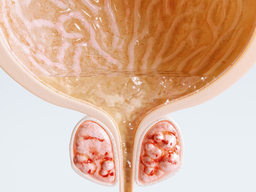ARlnc1 in Prostate Cancer Progression
TECHNOLOGY NUMBER: 7386
Tags:

OVERVIEW
A novel androgen receptor induced non-coding RNA associated with the prostate and prostate cancer- Expression of a non-coding RNA limited to the prostate and prostate cancer
- May serve as a diagnostic and prognostic biomarker and prostate cancer treatment
BACKGROUND
Prostate cancer is the second most common cancer in men and causes about 25,000 deaths in the United States each year. The prostate develops and maintains normal function through the interaction of androgens, predominately testosterone, and androgen receptors (AR) found on normal prostate cells. Not only are androgens levels positively correlated with the formation of prostate cancer in men, but AR expression also continues during the transformation of cells into prostate cancer. In addition to anatomically localized prostate cancer treatments such as surgery or radiotherapy, one avenue for treatment of locally advanced or metastatic prostate cancer has been the inhibition of androgens to decrease AR activation. However, a number of prostate cancers transition their behavior to become hormone resistant. For men with cancers having this status, AR may still be expressed and in some cases may have mutated to recognize ligands outside of androgens. A need therefore exists to develop therapies that target AR rather than influencing the androgens, themselves.
INNOVATION
Researchers at the University of Michigan have discovered a novel androgen receptor (AR) induced long, non-coding RNA (IncRNA) named ARInc1 which is specifically associated with the prostate and prostate cancer. ARInc1 is induced by AR and has been found to participate in a feedback loop that enhances the signaling of AR. The expression of ARInc1 is not noted in normal tissues other than the prostate, and its tumor expression is limited to those that originate in the prostate. ARInc1 therefore may act as a biomarker for prostate cancer diagnosis and prognosis. Investigations in a mouse model showed that reducing the gene expression of ARInc1 led to suppression of AR as well as a decrease in prostate cancer tumor growth. This novel lncRNA therefore has the potential to serve has a therapeutic target for the treatment of prostate cancer by controlling the expression of AR. Given that ARInc1 acts upstream of AR, it may be used in cancers which have become resistant to AR-targeted treatment.